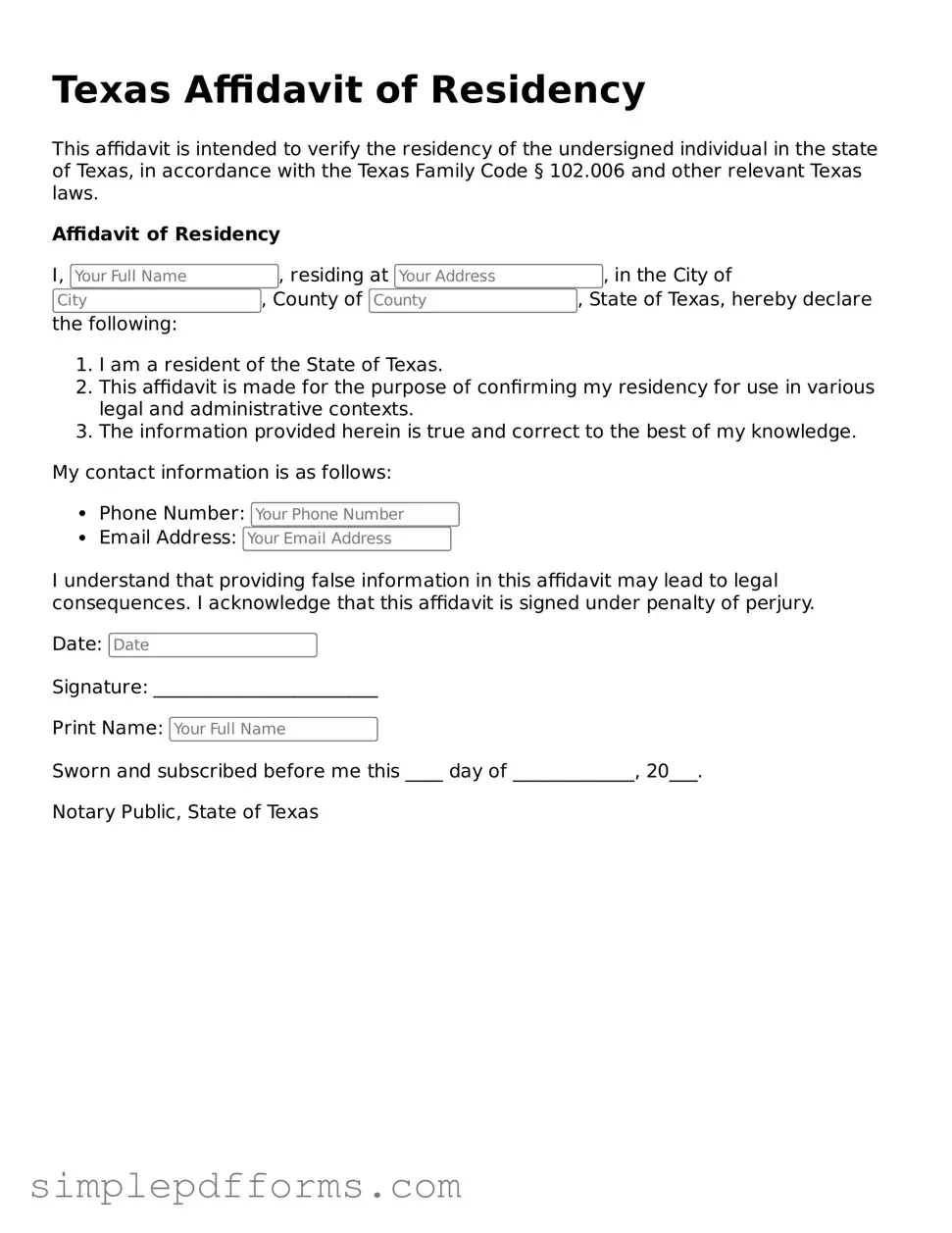Attorney-Verified Affidavit of Residency Document for Texas State
The Texas Affidavit of Residency form is a legal document used to verify an individual's residency status in the state of Texas. This form is often required for various purposes, such as obtaining a driver's license or enrolling in school. Understanding its requirements and implications is essential for residents navigating administrative processes.
Open Affidavit of Residency Editor Now
